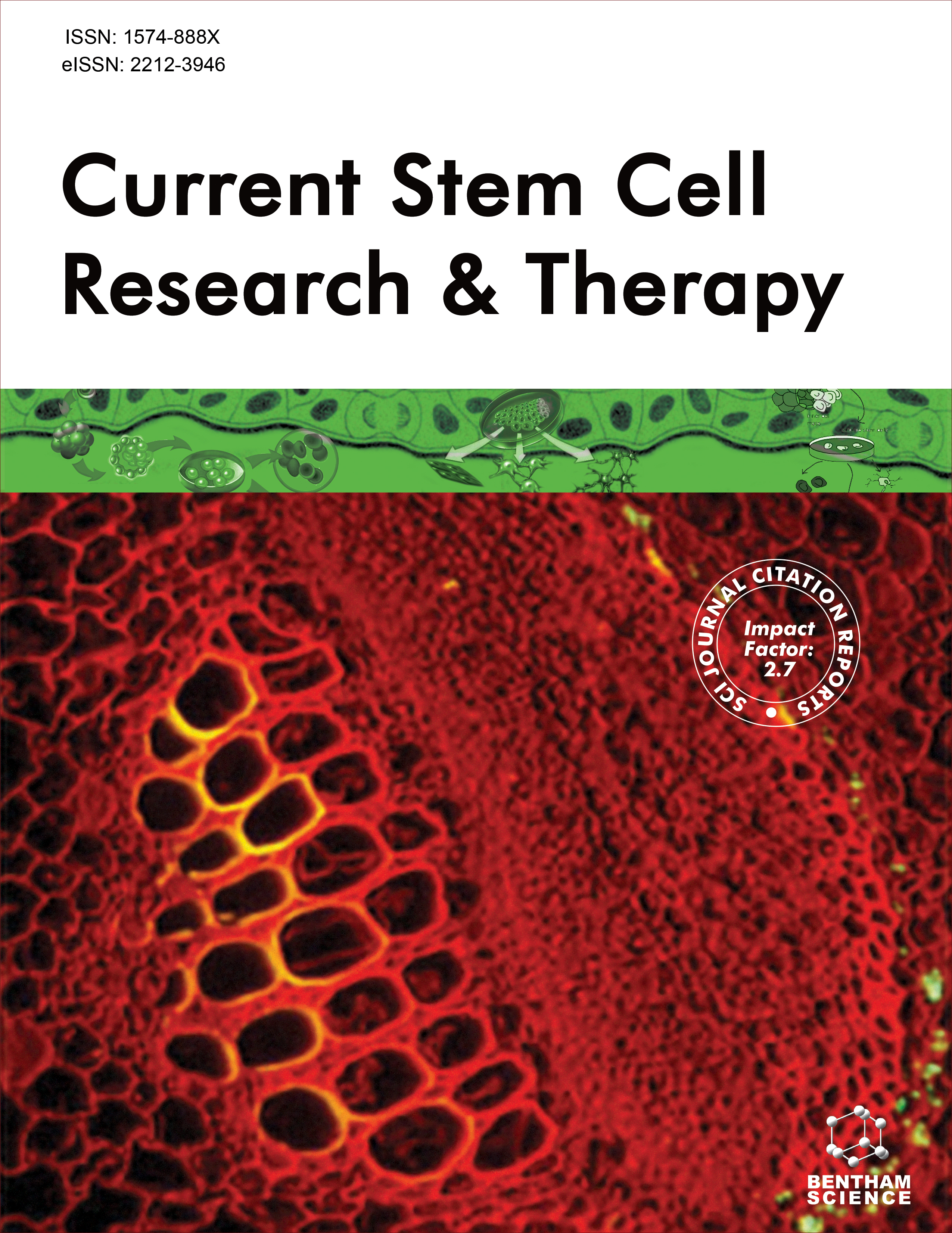- Home
- A-Z Publications
- Current Stem Cell Research & Therapy
- Previous Issues
- Volume 13, Issue 8, 2018
Current Stem Cell Research & Therapy - Volume 13, Issue 8, 2018
Volume 13, Issue 8, 2018
-
-
The Use of Electrospun Scaffolds in Musculoskeletal Tissue Engineering: A Focus on Tendon and the Rotator Cuff
More LessAuthors: Edward T. Stace, Navraj S. Nagra, Saket Tiberwel, Wasim Khan and Andrew J. CarrIntroduction: Rotator Cuff tears affect 15% of 60 year olds and carry a significant social and financial burden. Current operative techniques and repair adjuncts are associated with unacceptably high failure rates, stimulating investigation into novel tissue engineering and regenerative medicine (TERM) approaches in the field of rotator cuff surgery. In this review we explore the most recent advances in the field of electr Read More
-
-
-
CRISPR/Cas9 in Stem Cell Research: Current Application and Future Perspective
More LessThe clustered regularly interspaced short palindromic repeats-associated protein 9 or CRISPR/Cas9 system is one of the hottest topics discussed lately due to its robustness and effectiveness in genome editing. The technology has been widely used in life science research including microbial, plant, animal, and human cell studies. Combined with the pluripotency of stem cells, the technology represents a powerful tool to gener Read More
-
-
-
Mesenchymal Stem Cell Research in Veterinary Medicine
More LessAuthors: Mudasir B. Gugjoo, Amarpal, Vikash Chandra, Mohd Yaqoob Wani, Kuldeep Dhama and Gutulla Taru SharmaBackground: The researchers working in the field of medical, veterinary and other biological sciences have uniformly described unique characteristic features of stem cells including selfrenewal, prolonged multiplication, immuno-modulation and multi-lineage differentiation. These characteristics of stem cells have opened new horizons in cellular therapy for the management of numerous incurable diseases in huma Read More
-
-
-
Human Umbilical Cord Mesenchymal Stem Cells Therapy for Insulin Resistance: A Novel Strategy in Clinical Implication
More LessAuthors: Sheng Bi, Qing Nie, Wei-qun Wang, Yan-li Zhu, Xue-mei Ma, Chun-min Wang, Bao-cheng Zhang, Han-yang Li, Qiang Zhang and Guang ChenThere is increasing evidence reporting that as a common phenomenon in MetS relative diseases, insulin resistance (IR) is regarded as an independent etiological factor and a warning indicator of MetS occurrence. Therefore, for the special group (overweight or obesity), clinical regular monitoring of IR is an important basis for the prevention and early intervention of MetS relative diseases. This surveys reveals that hum Read More
-
-
-
A Review on Leukemia and iPSC Technology: Application in Novel Treatment and Future
More LessAuthors: Amirhosein Maali, Amir Atashi, Sasan Ghaffari, Reza Kouchaki, Fereshteh Abdolmaleki and Mehdi AzadLeukemia is an uncontrollable growth of hematopoietic cells due to a mutation in DNA followed by cellular dysregulation and one or more chromosomal disorder that generally leads to a clonal abnormality. Theoretical and technical inability in early screening and distinguishing cancer, tumor tolerance to common treatment methods, repeated relapses of cancer after remission phase, heterogeneous chromosomal abn Read More
-
-
-
Exploring Confluence-Related Signalling to Modulate the Expression of Oct4 – A Role in Facilitating Mouse Somatic Cell Reprogramming?
More LessBy Yu-Qiang LiOct4 is uniformly expressed by all types of pluripotent cells and is essential for pluripotency. Oct4 is also the central reprogramming factor that is constant in most transcription factor cocktails used to generate iPS cells. This article discusses the mechanisms of regulating Oct4 expression by confluence-based Hgf and hypoxia signalling in mouse somatic cells. Stat3 is activated ligandindependently in confluent cells and trigger Read More
-
-
-
Tissue Engineering in Achilles Tendon Reconstruction: A Systematic Review of Preclincal Studies
More LessAuthors: Saqib Mir, Reza Mafi, Pouya Mafi and Wasim KhanBackground: Tissue engineering is now being used in Achilles tendon (AT) repair in animal models. There are many preclinical studies that have used different types of stem cells for AT repair. However, there are no systematic reviews that evaluate all these studies to see which type of stem cell provides the most improvement for AT repair in animal models. Sahni V et al.,(1) divided the multiple stem cell types into three broa Read More
-
-
-
Preclinical Studies on Biomaterial Scaffold use in Knee Ligament Regeneration: A Systematic Review
More LessAuthors: Danielle E. Archer, Reza Mafi, Pouya Mafi and Wasim S. KhanBackground: Knee joint trauma may result in damage of the intra-articular ligaments, with rupture of the anterior cruciate ligament (ACL) a common and troublesome injury due to poor capabilities for spontaneous regeneration. Autograft and allograft surgical reconstructions are the mainstay of treatment, but have associated risks of failure, therefore tissue-engineering techniques aiming to regenerate the native AC Read More
-
Volumes & issues
-
Volume 20 (2025)
-
Volume 19 (2024)
-
Volume 18 (2023)
-
Volume 17 (2022)
-
Volume 16 (2021)
-
Volume 15 (2020)
-
Volume 14 (2019)
-
Volume 13 (2018)
-
Volume 12 (2017)
-
Volume 11 (2016)
-
Volume 10 (2015)
-
Volume 9 (2014)
-
Volume 8 (2013)
-
Volume 7 (2012)
-
Volume 6 (2011)
-
Volume 5 (2010)
-
Volume 4 (2009)
-
Volume 3 (2008)
-
Volume 2 (2007)
-
Volume 1 (2006)
Most Read This Month
Article
content/journals/cscr
Journal
10
5
false
en


